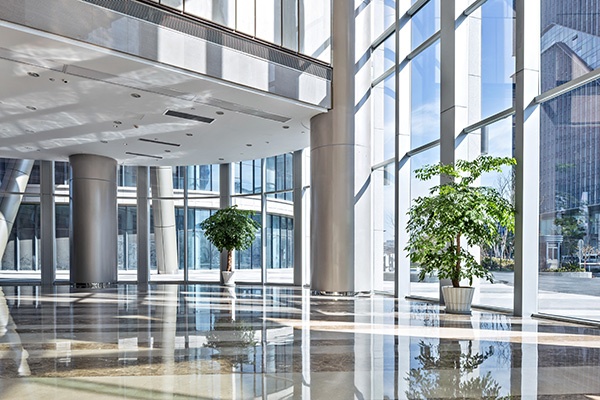
There are many complex terms that most commercial tenants stumble on during commercial leasing. One of the often confused concepts is the one regarding rentable versus usable square feet. Determining the total square footage a tenant is expected to pay for is one of the first steps in evaluating a commercial property, so being adequately informed can be helpful.
Usable Square Footage (USF)
Usable square footage is the actual office space you occupy from wall to wall. This space is uniquely yours, meaning that it’s not meant to be shared with other tenants.
Rentable Square Footage (RSF)
The rentable square footage comprises of the usable square footage plus a fraction of the building’s shared space. The shared space constitutes the common areas of the building, including restrooms, shared hallways, elevators, stairwells, and storage rooms, cafeteria, lobby, fitness center etc.
Common Area Factor (CAF)
The common area factor, also referred to as “load factor” or “add-on factor,” is the increase in the rentable square footage above the usable square footage. The equation that can help you figure out the load factor is as follows:
CAF = (RSF – USF) ÷ USF
If RSF is 5,000 and the USF is 4,000, then the CAF factor is calculated as follows:
CAF = (5,000 - 4,000) ÷ 4000
CAF= 25%
Loss Factor (LF)
This is the difference between the rentable square footage and the usable square footage. It’s equated as follows:
LF = (RSF– USF) ÷ RSF
If RSF is 5,000 and the USF is 4,000, then the LF is calculated as follows:
LF = (5000 - 4,000) ÷ 5000
LF= 20%
Why Do You Have to Pay for Common Areas
Landlords expect to be paid rent on every square foot in their commercial building. All common areas cost them money while adding value to the tenants, so the costs have to be passed on to the tenants. Landlords assign all common areas between their tenants based on what percentage of the building each of the tenants occupies. Therefore, you have to pay for common areas mainly because:
-
You can’t teleport yourself or your customers from the outside of your building right into your office space. You’ll need to use elevators, hallways and stairways, which all require maintenance.
-
The call of nature has to be answered every now and then, so the need for your employees to use restrooms will suffice.
-
The availability of a pleasant lobby on the ground floor will enhance your visitor’s perception about your business.
-
Without an office kitchen, you’ll find the services of a cafeteria in the building handy.
In other words, common areas attract certain costs, including maintenance and repair costs. Since you as a corporate tenant will be benefiting from your access to these common areas, it’s wise when you and your fellow tenants contribute a certain percentage.
Here are a few other articles to check out:
How You Pay for "Your" Common Area
Open Office Space: Is It Right For You?
Understanding Usable vs. Rentable Square Footage
Subscribe to our blog for more great tips!!








